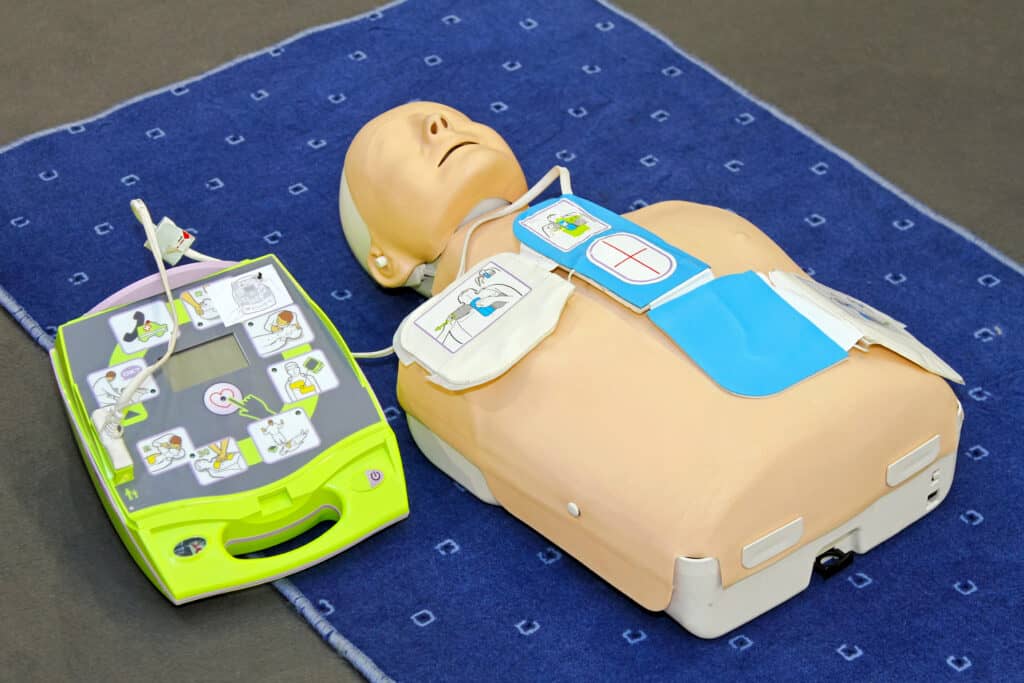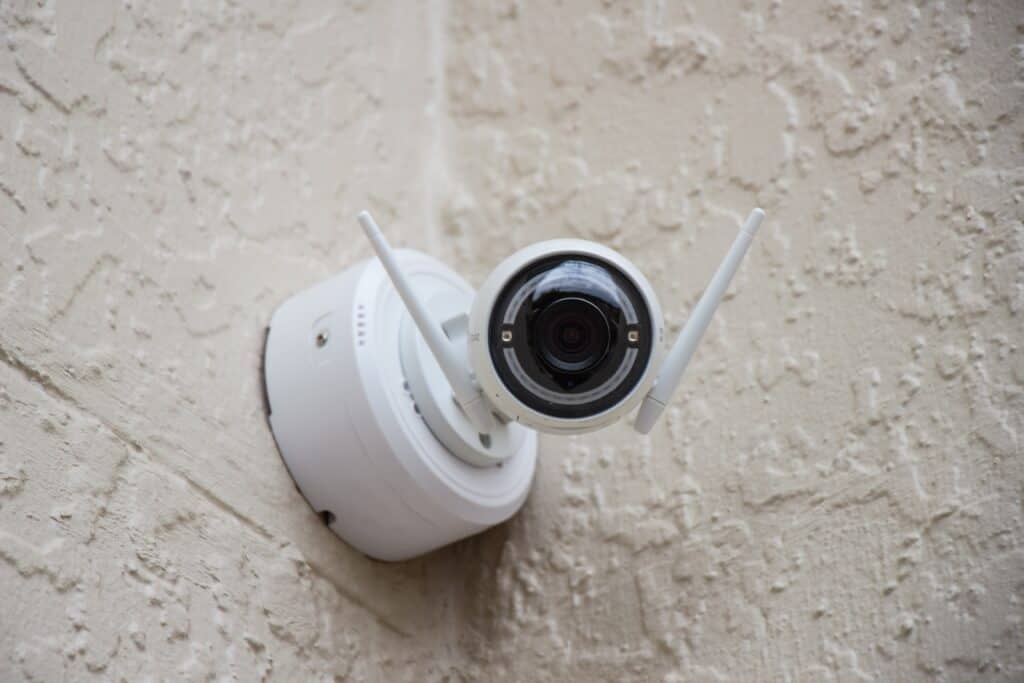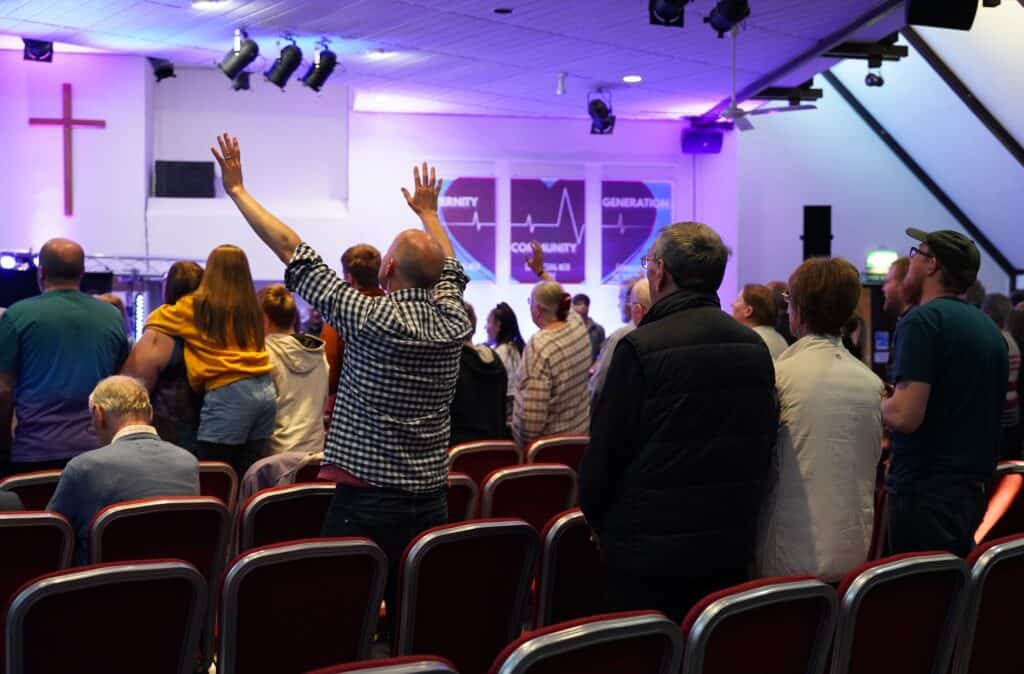Church security is a critical aspect of safeguarding the well-being of church members, staff, and visitors. Ensuring a secure environment for worship and community events requires a proactive approach that combines awareness, planning, and regular training. In recent years, incidents involving violence and other safety threats have heightened concerns, making it essential for churches to prioritize security measures.
Creating a secure church involves developing a comprehensive plan that addresses various potential issues, such as accidents, liability, child safety, and relational conflicts. A well-rounded plan establishes clear protocols for handling these challenges, allowing church leaders and members to respond effectively and swiftly during emergencies. In addition, fostering a culture of safety and security within the church helps minimize risks and promotes a sense of comfort among churchgoers.
An essential part of maintaining church security is regularly reviewing and updating the security plan, including conducting safety drills and evaluating the effectiveness of existing measures. This iterative process allows churches to adapt to evolving threats and ensure the continued safety of all attendees. Collaboration among church leaders, staff, and members is key to building a secure and welcoming place of worship.
Understanding Church Security
Church security is a significant concern as it involves protecting visitors, staff, and facilities from potential threats. Establishing a secure environment is vital for the congregation’s physical and emotional well-being, allowing them to focus on worship and fellowship.
One of the essential aspects of church security is creating a church security plan. This plan should outline procedures and steps to take in various situations, such as someone approaching the church with a firearm. Developing a plan enables the team to be prepared and act with confidence during emergencies.
Forming a church security team is another crucial step. This team should consist of individuals physically and mentally capable of serving and should be competent, self-controlled, and willing to help in tense situations. Training the security team members on their roles and responsibilities will ensure they can respond appropriately during incidents.
Church security also involves fostering a strong security culture. This process includes understanding the views of church members, pastors, facility management, office staff, and leadership on safety and security. By identifying their perspectives and gauging their positions, the church can effectively address concerns and achieve a high level of preparedness.
Implementing security and safety best practices is also vital for protecting churches. These may include securing the church entrance during services, having a communication system between team members, and regularly reviewing and updating security measures. It is essential to ensure that the congregation members are aware of these practices and understand their role in contributing to a secure environment.
Maintaining a balance between security and a welcoming atmosphere for visitors is crucial. A well-prepared team, a strong security culture, and adherence to best practices contribute to creating a safe environment for church members and guests to worship and connect.
Creating a Comprehensive Security Plan
Developing a comprehensive security plan is essential for keeping your church secure. The first step in developing a plan is to conduct a thorough risk assessment to identify vulnerabilities and weaknesses in your current security environment. This will help you create policies and procedures that address the specific risks your church faces.
Your church security plan should include an oversight board or council responsible for creating, managing, and updating the plan as needed. The board members must remain focused on the church’s mission and work with team members to finalize the security plan. It’s essential for all involved parties to communicate effectively to ensure smooth implementation and continuous improvement.
An effective church security plan goes beyond security policy and procedures. Consider installing video surveillance throughout your church’s premises. This not only helps monitor any suspicious activity but also acts as a deterrent to potential criminals.
Additionally, your security plan should include a protocol for handling emergencies, such as natural disasters or criminal activities. This protocol should outline the steps that church members, staff, and security personnel must take during such events. Make sure to communicate this protocol to all relevant parties and conduct regular drills to ensure everyone is familiar with the procedures.
Another crucial aspect of your security plan is the formation of a dedicated security team. This team should consist of volunteers or paid staff who are committed to the safety of the church and its members. Ensure that they receive proper training and support, with a clear understanding of their roles and responsibilities.
In summary, a comprehensive security plan requires careful assessment of your church’s specific vulnerabilities, the establishment of policies and procedures, and a security team ready to handle various situations. By implementing effective measures, you can create a safer environment for your church community while maintaining a welcoming atmosphere for worship.
Building a Competent Security Team
A secure church begins with a competent security team. Creating a strong team consists of recruiting and training volunteers, conducting background checks, and cooperating with local law enforcement. Security personnel must be well-prepared to keep the congregation safe.
Start building a security team by first identifying volunteers who have a passion for security and are dedicated to maintaining a safe environment for the church community. These individuals must be competent and have excellent communication skills.
Proper training is essential for a volunteer security team, as it equips them with skills and knowledge to handle various incidents that may occur during church gatherings. Regularly conducting training sessions and meetings will help the team stay prepared and up-to-date on their responsibilities.
Background checks are an important step in obtaining quality security staff for your church. Thoroughly investigate the history of potential team members to ensure they are suitable for the role. This process helps maintain a trustworthy and reliable security team that can effectively protect the congregation.
Finally, establish a relationship with local law enforcement. Collaborating with police can improve the overall security of your church, as they can provide valuable assistance in creating security protocols, conducting risk assessments, and providing information about potential threats. A strong partnership with law enforcement will contribute to a comprehensive and effective security plan.
Implementing Security Measures and Protocols
Churches, like other institutions, need to prioritize safety and security. Implementing security measures and protocols should be a well-thought-out process that considers various factors and aims to address a wide range of security issues.
To begin, consider establishing a security team responsible for managing and overseeing the various aspects of the church’s security. This team should include individuals with relevant training and backgrounds, such as law enforcement, military, or security professionals. The security team should create a comprehensive security plan, answering questions such as “what should we do if…” in any given situation.
In terms of physical security, installing cameras around the church’s exterior and interior can serve as both a deterrent and a valuable source of evidence in case of any security breaches. Additionally, alarm systems, particularly in vulnerable areas like entrances and windows, can further improve the church’s overall security.
Ensuring that church doors are consistently locked when the building is unoccupied is crucial to maintaining a safe environment. It is important to regularly inspect and maintain the building’s structure and accessibility, removing any potential hazards and keeping exits clear for use in emergency situations.
Communication plays a vital role in effective security measures and protocols implementation. Informing the congregation about security protocols and encouraging everyone’s participation in maintaining a secure environment fosters a sense of collective responsibility.
Finally, it is essential to periodically review and update security plans, taking into account any changes within the organization, new threats, or advances in security technology. Regularly reviewing security protocols helps to keep the church’s security measures up-to-date and relevant.
Implementing these security measures and protocols will contribute significantly to maintaining a safe and secure environment for all members of the church to worship, fellowship, and grow together.
Training for Emergency Situations

Churches are becoming more aware of the need for safety and security in today’s world. Training for emergency situations should be an essential aspect of any church’s security plan. It is crucial for the church staff, volunteers, and congregation to be prepared for emergencies such as acts of violence, mass shootings, accidents, and natural disasters.
One of the first steps in preparing for emergency situations is to conduct a thorough security assessment of the church’s facilities. This can help identify potential hazards and vulnerabilities, and allow the leaders to develop a comprehensive plan to address them. The plan should include emergency scripts, evacuation procedures, and guidelines for responding to different types of emergencies.
Active shooter incidents are a particular concern for places of worship. In order to effectively respond to an active shooter situation, staff and volunteers should undergo specialized training. This training can include drills, exercises, and role-playing scenarios to simulate an active shooter situation and help participants learn how to react in a fast and effective manner.
In addition to active shooter training, it is important to train church members on how to respond to other types of emergencies. This can include training on how to evacuate the building during a fire or natural disaster, as well as providing first aid and medical assistance in case of accidents and medical emergencies. It is essential to have a well-equipped and easily accessible first aid kit on the premises, and designated individuals trained in CPR and basic first aid.
Regularly scheduled training sessions can help ensure that everyone is aware of the emergency protocols, and feels confident in their ability to respond to a variety of situations. Keeping the congregation informed about the church’s security plan and training opportunities can also be beneficial, as it fosters a sense of security and encourages community involvement.
In conclusion, training for emergency situations is essential for keeping a church secure. It not only prepares staff, volunteers, and congregation members to respond effectively to emergencies but also creates a greater sense of safety and community.
Cybersecurity for Church Data
Churches, like any other organization, must be vigilant in protecting their data from cyber threats. Implementing effective cybersecurity measures is crucial to safeguard sensitive information and maintain the trust of the congregation. This section will discuss some important steps to ensure the security of your church’s data.
One crucial aspect of cybersecurity is securing the church website, an asset often targeted by hackers. Installing an SSL (Secure Sockets Layer) certificate is an essential step in enhancing website security. This encrypts the data transmitted between your website and its users, thereby protecting sensitive information from third parties. Ensuring your site uses HTTPS (Hyper Text Transfer Protocol Secure) instead of HTTP also minimizes the risk of data interception.
Training staff and volunteers to identify and avoid potential cyber threats is critical. Hackers often attempt to gain access to your systems through phishing emails or malicious links. Educating church members on how to recognize suspicious emails, attachments, and links plays a significant role in preventing unwanted access to sensitive data.
Regularly updating software and applications is crucial in defending against cyberattacks. Hackers often exploit vulnerabilities in outdated software to infiltrate a church’s digital infrastructure. Patching software and ensuring all applications remain up-to-date mitigates the risk of falling victim to cyber threats.
Investing in antivirus software and firewalls goes a long way in safeguarding church data. This adds an extra layer of protection, detecting and blocking malware and other malicious tools that hackers use to compromise systems.
It’s also essential to have secure backups in place. In the unfortunate event of a cyberattack or data breach, having a reliable backup system will allow your church to restore its data and ensure its digital infrastructure continues to function.
Implementing these cybersecurity measures will significantly enhance your church’s digital security, better protecting sensitive information and financial assets from cyber threats.
Ensuring Safety for Congregation and Staff

Church security is a crucial aspect of creating a safe and welcoming atmosphere for members, staff, and visitors. Implementing safety measures for members, services, and child safety is essential in assisting in the prevention of potential accidents or incidents.
One key step churches can take is developing a comprehensive security plan. This plan should include guidelines on addressing various potential emergencies, such as fires, medical situations, natural disasters, or an active shooter scenario. It should outline the roles and duties of congregants and staff in such situations, as well as provide guidance on communication and coordination during emergencies.
Churches should also strongly consider installing video surveillance systems both inside and outside the building. These systems can help monitor activities, deter criminal activities, and offer valuable evidence if an incident occurs.
Maintaining child safety is a top priority for any church and requires strict policies to ensure that children are protected. One crucial measure churches can implement is to never allow an adult into the children’s area without proper identification. Conducting background checks for volunteers and staff who interact with children is also essential to creating a secure environment for young congregants.
While addressing security measures during church services, it is important to have a plan in place to respond to any potential threats or disruptions. This plan can include training staff and volunteers to identify and respond to various situations, establishing a clear communication system, and coordinating with local law enforcement if necessary.
In conclusion, providing a safe and secure environment for congregation members, staff, and visitors requires careful planning, coordination, and continuous evaluation. By addressing the needs of congregants and staff, as well as preparing for potential risks and threats, churches can confidently create a sense of safety and peace for all.
Maintaining Relationships with Community and Law Enforcement
One key aspect of keeping a church secure is fostering a strong connection between the community and law enforcement. A healthy relationship with local law enforcement ensures that they are aware of the church’s activities and can offer support when needed. Moreover, community involvement promotes a sense of mutual responsibility and shared values among the congregation.
It is important to establish regular communication with local police and public safety officials. This can be achieved by inviting them to church events, arranging meetings, and seeking their guidance on specific security concerns. Collaborating with law enforcement helps create a safer environment for the church and its members.
Assistance from the community plays a vital role in enhancing church security. Engaging with local groups will encourage congregation members to contribute their skills and resources to the church’s security operations. For example, volunteer neighborhood watch groups can help monitor the area near the church, providing an extra layer of security and vigilance.
Promoting transparency and openness between the church, its congregation, and law enforcement can also help in fostering trust. Addressing any issues or concerns with local police in a timely manner will improve the partnership and avoid potential misunderstandings.
Furthermore, it is critical to support and participate in community events and initiatives that aim to enhance safety and social cohesion. This active involvement can strengthen the bond between the church, the community, and law enforcement and provide a platform to address broader concerns regarding public safety.
In conclusion, maintaining a strong relationship with both the community and law enforcement is crucial for ensuring the security of a church. By working together, churches, communities, and law enforcement agencies can create a more secure and united environment for all.
Reviewing and Updating Security Measures
Church security is a crucial aspect of ensuring the safety and well-being of the congregation. It requires ongoing attention and adaptation in response to emerging threats and vulnerabilities. Regularly reviewing and updating security measures is essential to maintaining a secure environment for all church members and visitors.
Developing a comprehensive security plan is an important first step in safeguarding a church. This plan should outline the protocols and procedures in place to combat potential emergencies or threats and should be revisited periodically to ensure its effectiveness. Many factors may necessitate updates, such as changes in the local environment, technological advancements, or lessons learned from other congregations or outside sources.
One crucial component of the security plan is risk assessment, which identifies potential hazards and vulnerabilities. Regularly conducting risk assessments allows churches to evaluate any new or evolving threats and modify measures accordingly. This might include upgrading physical security measures, such as installing surveillance cameras or enhancing access control systems to reduce the likelihood of unauthorized entry.
Aside from assessing risks, it is essential to keep the entire congregation informed and engaged in the church’s security efforts. Updating the security plan and sharing the most recent version with staff, volunteers, and members can help foster a culture of security awareness. This ensures that everyone is aware of their role in maintaining a safe and secure environment.
Additionally, collaborating with security professionals can provide invaluable insights and expertise in keeping your church secure. By seeking outside assistance, churches can benefit from experts who are familiar with best practices and can provide recommendations for improvements tailored to individual needs.
Finally, consider implementing regular training sessions for staff and volunteers. These sessions can cover critical topics, such as emergency response procedures and threat recognition. Involving the congregation can help ensure that everyone feels responsible for maintaining a safe church environment and is better prepared to respond in the event of an emergency.
In conclusion, regularly reviewing and updating a church’s security measures is vital to maintain a safe and secure environment for worshippers. By developing a comprehensive security plan, conducting risk assessments, engaging with security professionals, and encouraging ongoing training, churches can better protect their congregations from potential threats and hazards.
Frequently Asked Questions
What are effective church security protocols?
Effective church security protocols involve creating a detailed security plan and having a dedicated security team in place. This plan should include emergency response procedures, communication guidelines, and access control measures to protect the congregation. Installing a security system and regularly reviewing and updating the security plan is also essential for maintaining a secure church environment.
How can a church security guard improve safety?
A church security guard can improve safety by monitoring the premises, addressing potential threats, and assisting congregants in emergency situations. They can help control access to the church, maintain order during events and services, and respond to incidents as needed. By having a visible presence, security guards can also act as a deterrent to potential criminals.
What are examples of successful church security plans?
Successful church security plans include comprehensive strategies to address various issues, such as emergency response procedures, access control measures, and guidelines for dealing with disruptions or threats.
How can a church safety team be trained properly?
Proper training for a church safety team involves providing them with the necessary skills and knowledge to effectively respond to various situations that may arise, such as medical emergencies, disruptive behavior, and potential threats. Conducting regular training sessions and emergency drills can help keep the safety team prepared and up-to-date with the latest security measures and best practices.
What are important church security goals and objectives?
Important church security goals and objectives include ensuring the safety of congregants, staff, and visitors; maintaining a welcoming and secure environment; protecting church property; and reducing the risk of incidents and accidents. By establishing clear goals and objectives, a church can better develop and implement effective security measures that address the specific needs and concerns of its congregation.
What role does security play in the church?
Security plays a vital role in the church by preserving the physical safety, emotional well-being, and spiritual growth of its members. A secure church environment allows worshipers to focus on their faith and community, without concerns about potential threats or disruptions. Additionally, implementing robust security measures can help protect the church’s assets and reputation.








